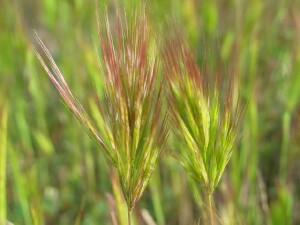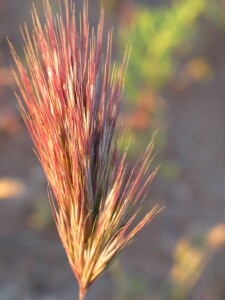Red Brome
Back | Salinity Indicator Plants Home | Common name home | Scientific name home | Photo Gallery | Glossary
| Red Brome photos | Family Name: Grass (Poaceae syn. Gramineae) |
| Scientific Name: | Bromus rubens | 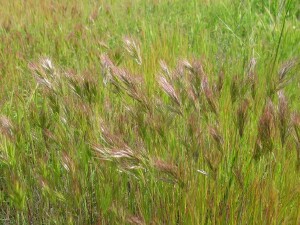 Red Brome plants Photo: A J Brown |
Status: | Native to the Mediterranean. Naturalised across all Australia except the Northern Territory. | |
Plant Description: | A slender to tufted, annual grass to 40 cm tall with erect or bent stems. Leaves are softly hairs; blades are flat to 20 cm long and 5 mm wide. Flower-head is a dense, ovoid to obovoid, erect, panicle to 8 cm long. The spikelets are 12-20 mm long and contain 4-8 florets. The outer glumes are 5-12 mm long; the lower being shorter than the upper. The lemma (larger of the inner flowering bracts) is 10-14 mm long and has a straight (though recurving slightly when mature) awn or bristle, 8-12 mm long. | |
Habitat: | A common weed of sandy soils, dry lake beds and river flats in the north and north-west parts of Victoria but is also often found on the higher parts of saline flats. | |
Comments: | There are about 12 species of Brome-grasses found in Victoria, all but one being introduced exotics. Other common species include Great Brome (Bromus diandrus) and Soft Brome (B. hordeaceus). | |
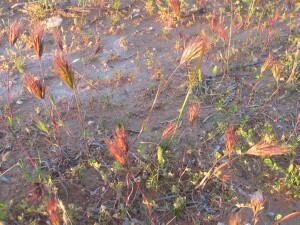 Red Brome plants showing drought stress Photo: A J Brown | 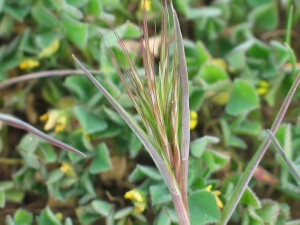 Emerging flower-head of Red Brome Photo: A J Brown |
|
|

